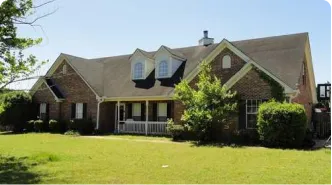In recent years, more travelers have swapped short getaways for extended stays, and Airbnb hosts are noticing the shift. Bookings lasting 28 nights or more now make up a big slice of total reservations — driven by remote work, digital nomads, and people between homes. This trend means steady income and fewer turnovers for hosts, but it also raises a key question: should you offer discounts to attract these long-term guests?
In this quick guide, we’ll break down the perks, potential pitfalls, and smart tips to help you decide if giving a price break for longer stays makes sense for your Airbnb.
Benefits of Offering Long-Term Discounts
- Steady Income Stream: One of the biggest perks of hosting long-term guests is the financial stability. Instead of worrying about filling gaps in your calendar, you can count on a predictable payout every month.
- Less Work, Less Hassle: Fewer check-ins and check-outs mean you won’t be constantly coordinating cleanings, inspections, or guest questions. It frees up your time and cuts down on turnover costs.
- Better Visibility: Airbnb often favors listings that offer attractive long-term rates, so adding a discount can help bump you up in search results and catch the eye of guests looking for extended stays.
- Appeals to Specific Guests: Offering a deal can attract remote workers, students, or anyone needing a temporary home base — a great way to tap into new guest groups and keep your place booked.
Potential Drawbacks to Consider
While long-term discounts can bring in steady bookings, they’re not always a clear win for every host. For starters, offering a lower nightly rate means you might earn less overall, especially during peak travel seasons when you could charge more for shorter stays. It’s worth crunching the numbers to see if the trade-off makes sense for your location and property.
Another thing to watch out for is local rental laws. In some places, once a guest stays longer than 28 days, they might gain tenant rights. This can make it much harder to resolve problems or ask someone to leave if things don’t work out.
Longer stays can also mean more wear and tear on your place. Guests settle in, use appliances more, and generally treat it like home — which can add to maintenance costs down the line.
Lastly, cancellations can get tricky. Airbnb’s policy for long-term bookings often favors the guest, so if someone cancels halfway through a discounted stay, you might not get fully compensated. It’s important to read up on Airbnb’s cancellation terms so you’re not caught off guard.
Best Practices for Implementing Long-Term Discounts
- Strategic Pricing: Don’t just slap on a discount and hope for the best — use Airbnb’s pricing tools to test out weekly or monthly deals that still keep you profitable. Always factor in utilities, cleaning, and wear and tear.
- Guest Vetting: Longer stays mean sharing your space for weeks or months, so take time to screen guests properly. Read reviews, ask questions, and trust your gut if something feels off.
- Clear Communication: Be upfront about house rules, check-in expectations, and whether you’ll pop by for cleaning or maintenance. The clearer you are now, the fewer surprises later.
- Legal Awareness: Long-term stays can sometimes cross into tenant territory. Brush up on your local rental laws so you’re not caught off guard if you ever need to handle an overstaying guest.
Takeaway
Offering long-term discounts can be a smart way to secure steady income and cut down on guest turnover — but it’s not without its downsides. Lower nightly rates, extra wear and tear, and tricky local rules are all things to think through before you adjust your pricing. At the end of the day, there’s no one-size-fits-all answer. Take a close look at your property, your market, and what works best for your hosting style.
Need help figuring it all out? RedAwning’s property management services can handle pricing strategies, guest screening, and more — so you can enjoy the benefits of longer stays without the headaches. Learn more and get started with RedAwning today!










%201.webp)
%203.webp)



%201.webp)
.webp)

